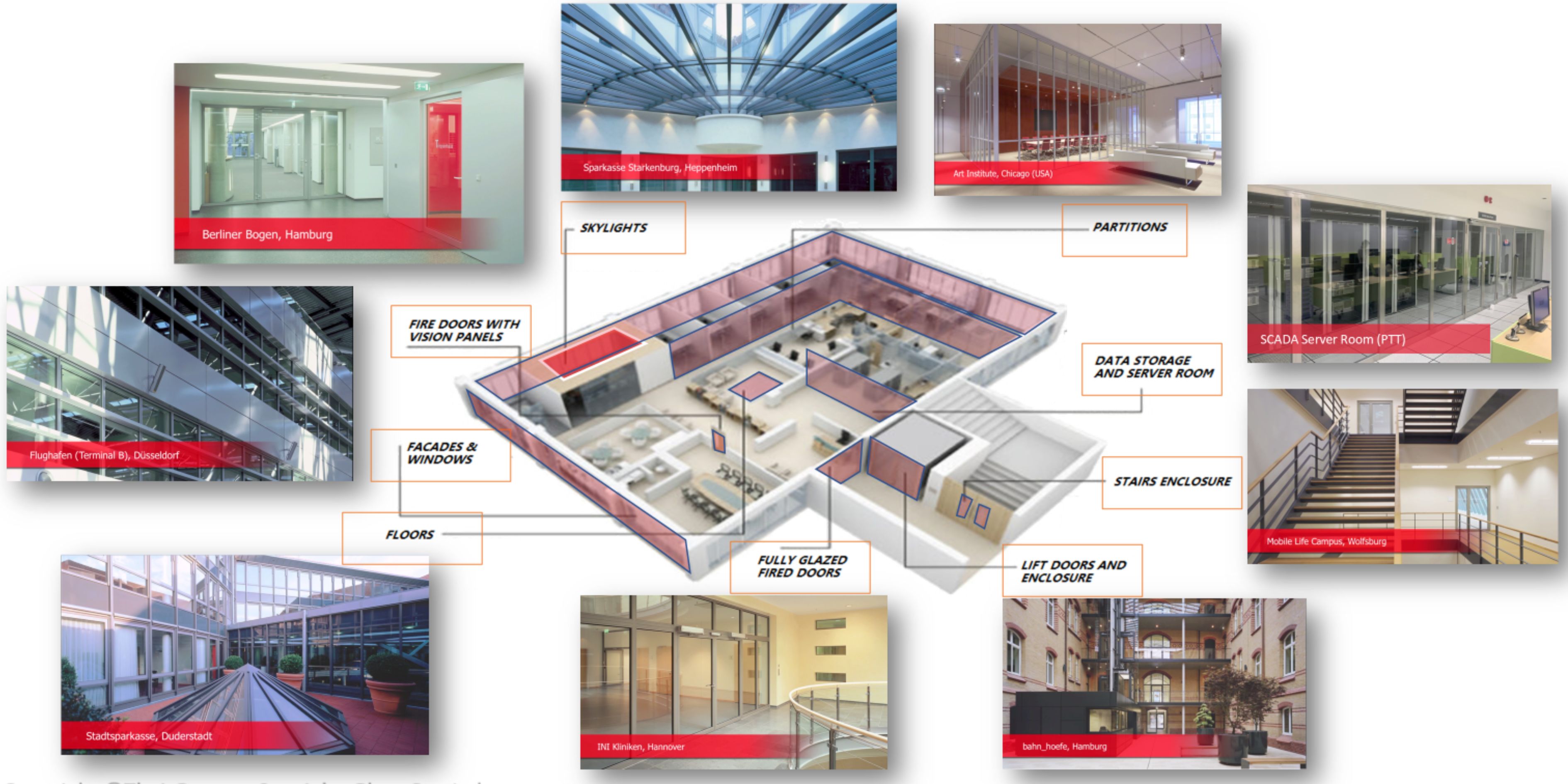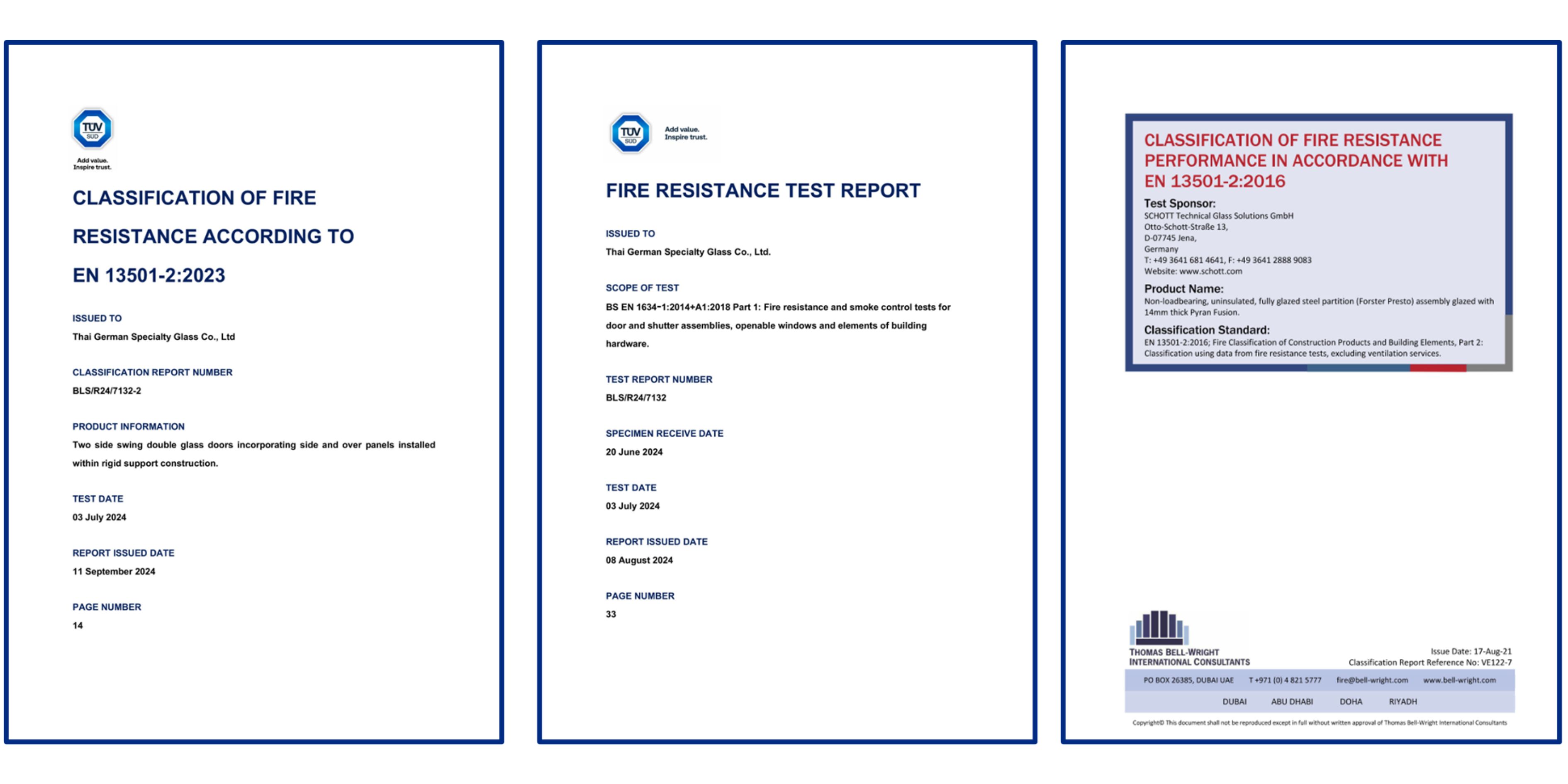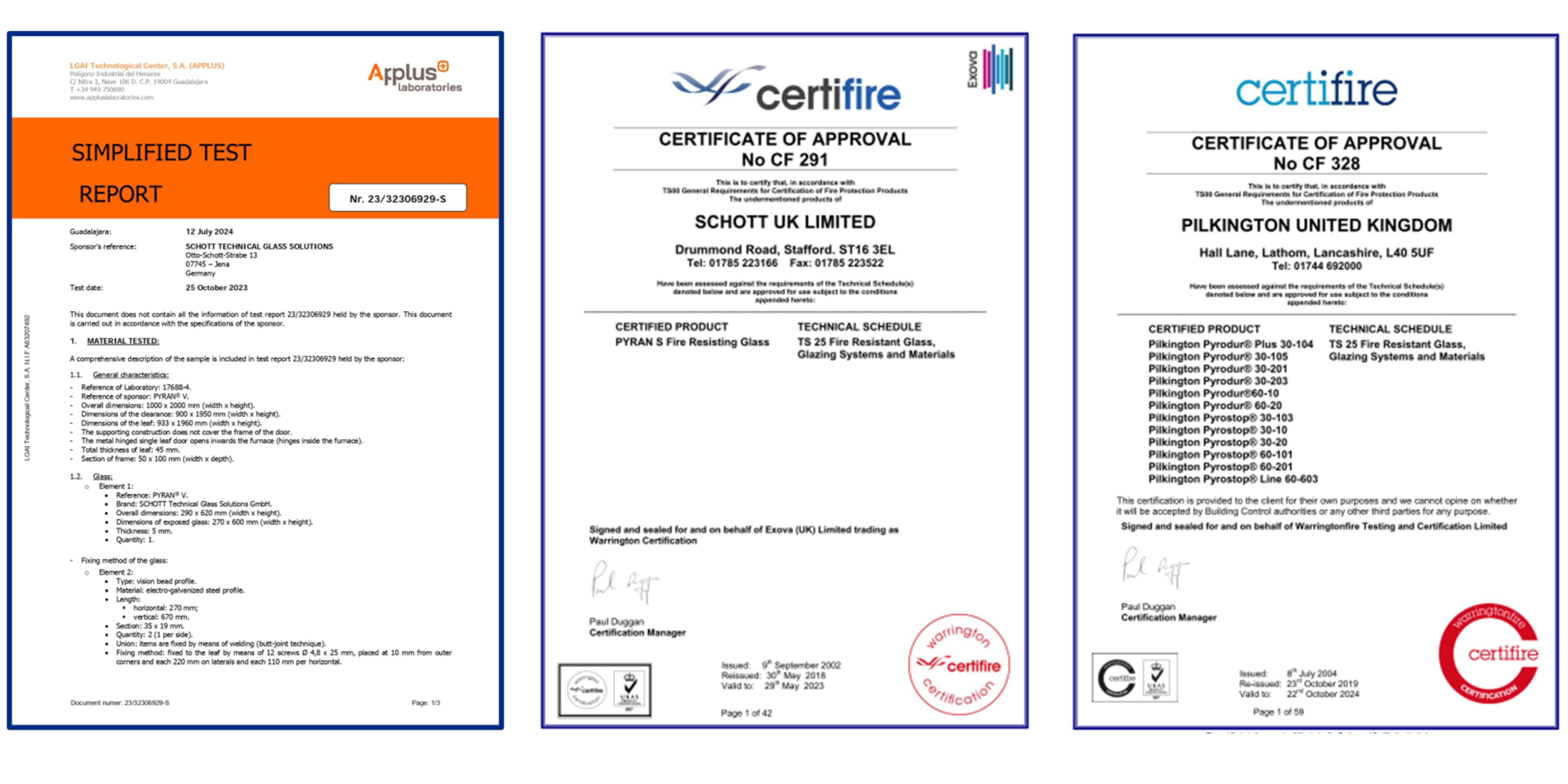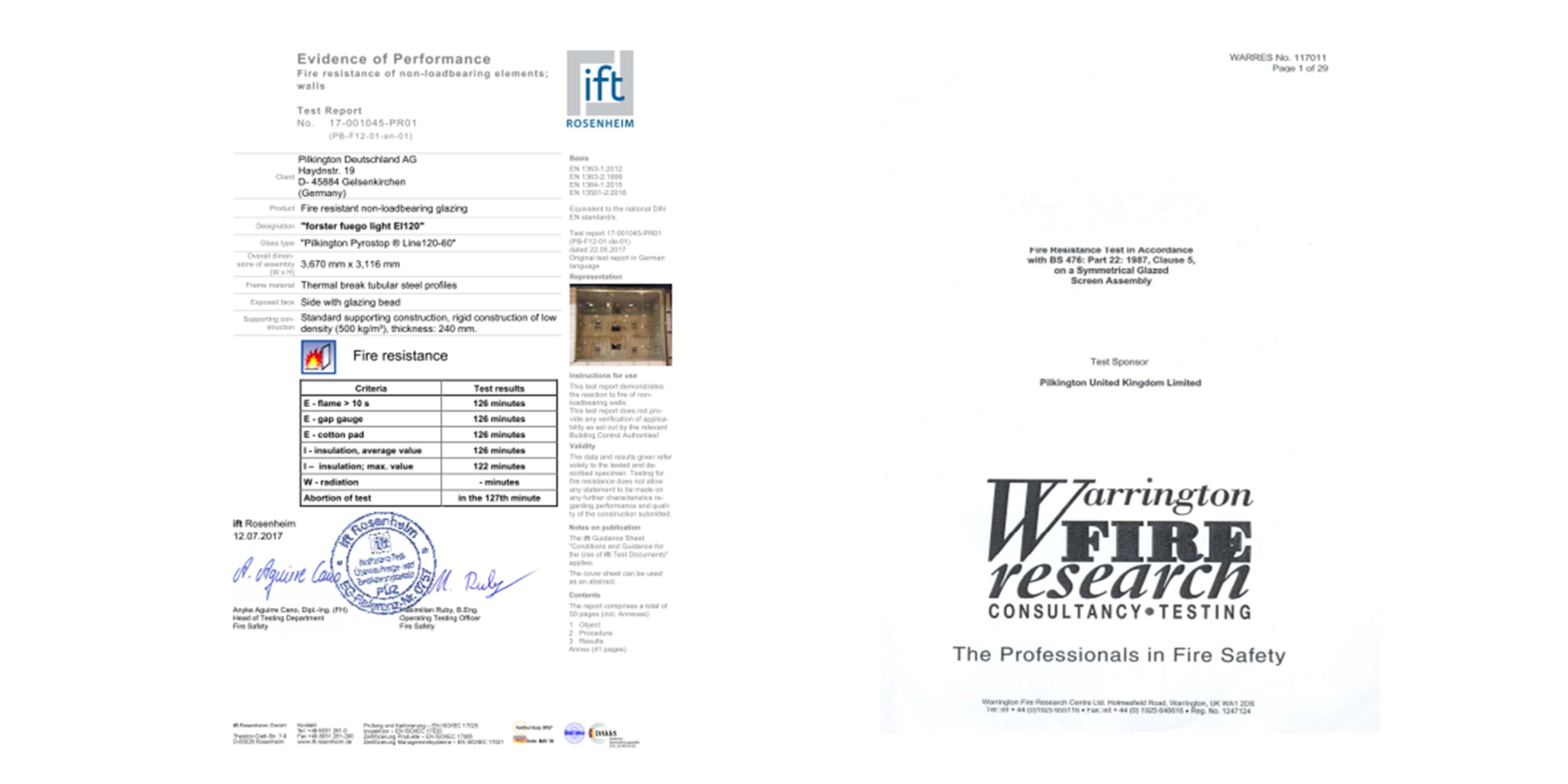

A range of fire-resistant glass types is available in offering increasing levels of classified protection, which is measured in defined time periods (30, 60, 90, 120 and 180 minutes) and in terms of Integrity and Insulation or Integrity only as designated by the European Standards. It should be noted that fire-resistant glass must always be specified as part of a tested and approved glazing system, and installation should be carried out by specialists in order to ensure that the expected fire performance achieved should be called upon.
Insulation : The ability of a specimen of a separating element to restrict the temperature rise of the unexposed face to below specified levels. Temperature rise on the unexposed fire side shall not be more than 140ºC (average value) or 180ºC (maximum individual value) above ambient temperature
Integrity : The ability of a specimen of a separating element to contain a fire to specified criteria for collapse, freedom from holes, cracks and fissures and sustained flaming on the unexposed face.
Fire-rated Classification

Fire Classification
These diverse regulations and requirements for the use of fire-resistant glazing have led to the definition of the European standardised fire-resistance performance classification which comprises three classes :
TECHNICAL DATA
_1744271462.jpg)
FIRE-RATED GLASS APPLICATIONS

Certification


Test Report

Design Options
_1744275019.jpg)